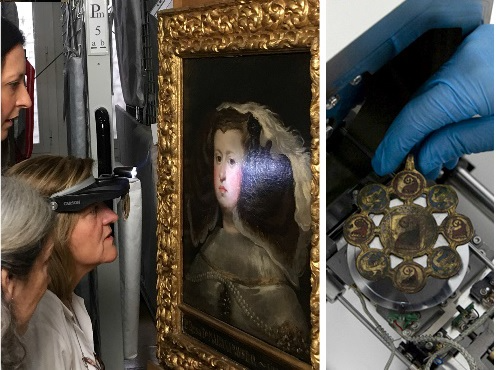E-RIHS Stakeholders
“E-RIHS stakeholders” refers to the interested parties or stakeholders involved in the E-RIHS ERIC. They are people or organizations who have interest in our research infrastructure and may be significantly affected by our outcomes.
E-RIHS ERIC focuses on the conservation, protection, and study of cultural heritage through the application of scientific and technological approaches. It is composed of Member Countries and Observers. Each member country is organized in a national node, that gathers national research organisations and facilities.
What are the benefits of joining E-RIHS ERIC as a Member?
As a Member of E-RIHS ERIC will:
- Be part of the only Research Infrastructure Consortium working in heritage science, sharing practices, competencies, methods and technologies
- Maximise investment in research and increase visibility and opportunities for national facilities
- Participate in dedicated European, national and regional programs and funding schemes
- Promoting teaching and training for future heritage scientists
What are the benefits of joining E-RIHS as a researcher?
As a researcher, you will:
- Participate in a multidisciplinary, lively research community
- Increase the visibility of your research in the heritage science field
- Exchange knowledge, expertise and training and create chances for international collaboration
- Ensure the community to have long-term accessibility to your outcomes.
Potential stakeholders or interested actors in E-RIHS ERIC may includes: wikipedia
How to get involved with E-RIHS
E-RIHS allows for two different kinds of participation. You can either get involved as an individual or become a member or observer of the E-RIHS consortium.
If you are interested in becoming a Member or an Observer, or if you would like to find out more about contributing to E-RIHS in any way, please get in touch with us at co@e-rihs.eu.

Guidance on how to participate as an organisation
Membership to E-RIHS ERIC is open to interested Member States of the European Union, Associated Countries, Third countries other than associated countries and intergovernmental organizations.
To apply for membership, you shall submit a written application to the Chair of the General Assembly, which is subject to the approval of the General Assembly.
Member States of the European Union, Associated countries, Third countries and intergovernmental organizations interested in E-RIHS, but who are not yet ready to join as Members, can join as Observers through specific agreements. The procedure is to apply with a written application to the Chair of the General Assembly. The request is subject to the approval of the General Assembly.
Visit the list of members and observers for more information on the composition of national consortia.
How to participate as an individual in E-RIHS
If you are an individual researcher interested in participating in E-RIHS, there are several ways to get involved and access the facilities and collections: